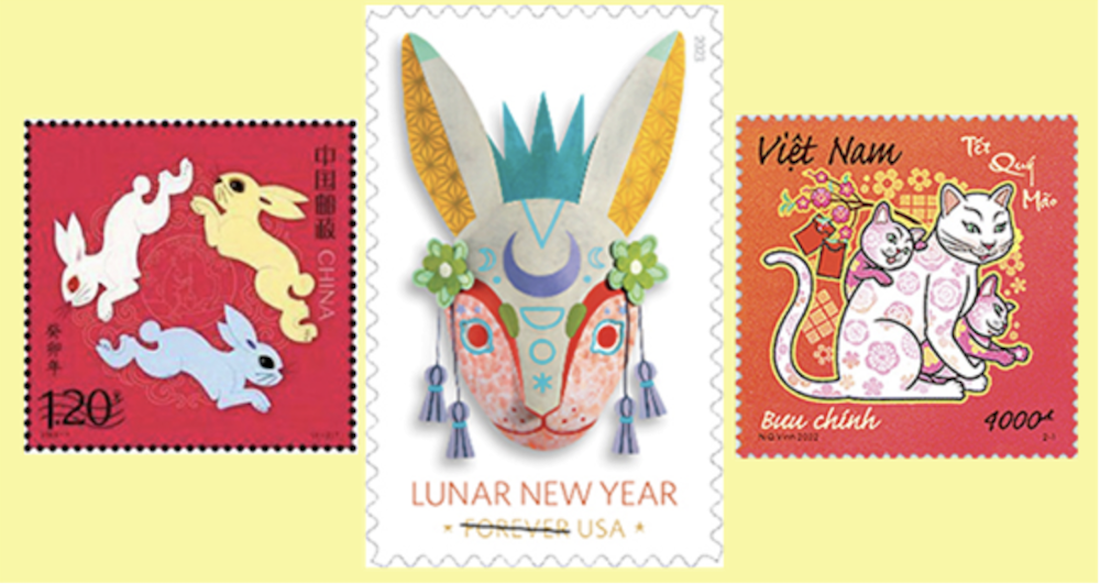
Dozens of countries celebrate Chinese New Year with commemorative postage stamps. Chinese call the lunar new year the Year of the Rabbit. Vietnamese says the next 12 months will be the Year of the Cat.
By Jian Huang
Shopping is as important to the Chinese as baseball is to Americans. Especially during the Chinese New Year season that starts at the end of January, people from all walks of life congregate together at shopping malls for the cultural ritual of getting good bargains. For the affluent and designer-obsessed, a plane ticket (or several) to Paris or Beverly Hills is a perfect way to start the year. Retailers, anticipating an influx of high-value sales, reciprocate their goodwill in dazzling displays of red and gold lights, festival sounds of dragon and lion dances, and local fare with an Asian twist that caters to the Chinese palate and, more importantly, their wallets.
But Covid restrictions over the last three years have restricted this Chinese national pastime. Rigidly enforced lockdowns across the country resulted in a moribund economy. But now, following massive protests across the country, China is reopening its doors and people are stampeding through.
In November alone, Chinese travelers spent a staggering 15.9 billion dollars in the US. That number is now expected to rise significantly. And while the Year of the Rabbit is a year of cautious optimism, retailers here in the United States are opening their doors wide open in eager anticipation of the return of the Chinese consumer.
Citadel Outlets, Los Angeles
Los Angeles with its iconic palm trees, Hollywood glamor and plenty of Chinese cuisine is a popular tourist destination for Chinese shoppers Malls like the Citadel Outlets in Los Angeles welcome Chinese shoppers with a month-long celebration. On January 21-22 shoppers were treated to lion dances and firecrackers throughout the center. Free red envelopes filled with giveaways and coupons from brands like Coach and Kate Spade will be distributed from January 13 to February 13. Plus, there’s the added bonus of its already reduced outlet price tags.
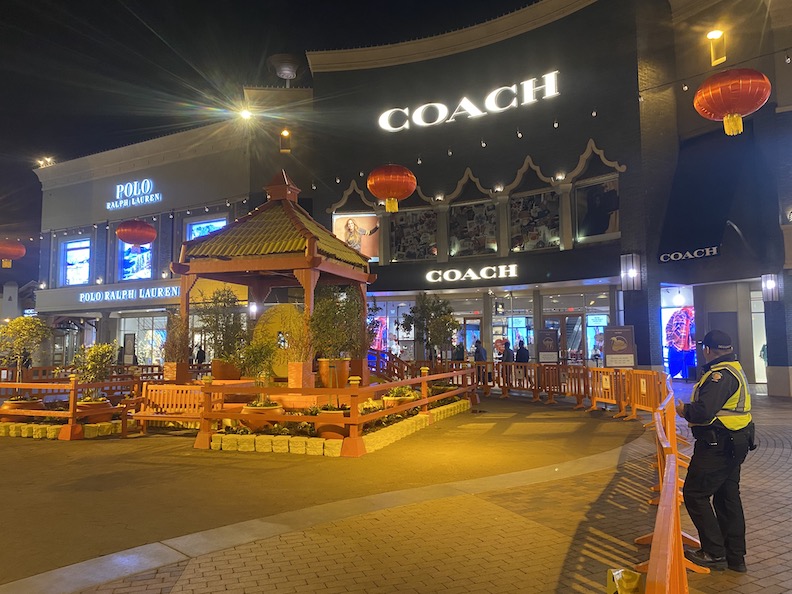
There’s a month-long sale at the Citadel Outlet stores in Los Angeles. Retailers hope to attract Chinese shoppers with bargain prices on designer labels.
The Galleria, Houston
In the middle of the country, Texas boasts a large Chinese community. At The Galleria in Houston, brands that cater to the uber-affluent include Alexander McQueen and Christian Louboutin. The Galleria will host two days of festivities to welcome the Year of the Rabbit with free performances and games for the family, located conveniently on Level 1 outside of Nordstrom. Individual retailers like Armani Exchange, Gucci, and Tods are also geared up to offer their own specials with red envelopes and rabbit-themed gifts with purchase.
Bridgewater Commons, New Jersey
For Chinese tourists headed to the East Coast, New Jersey offers plenty of shopping and a lower sales tax than their neighbors in New York. Celebrations at Bridgewater Commons start on January 22 with traditional performances of dragon and lion dances, a Chinese yoyo show, and of course, red envelopes filled with coupons and good fortune for lucky attendees.
It’s not unusual for one country to embrace the holidays of another. Largely for commercial reasons, Christmas is widely celebrated in China despite President Xi Jinping’s admonition that party members must be “unyielding Marxist atheists.” But California’s acceptance of Chinese New Year has been rapid, overwhelming and color-coordinated in red and gold.
Welcome to the Year of the Rabbit. Kung Hei Fat Choy! Or Chúc Mừng Năm Mới if you’re Vietnamese celebrating Tét where it’s the Year of the Cat.
If the U.S. West Coast has a new retail religion, South Coast Plaza in Costa Mesa, CA is Mecca and Jerusalem combined.
Located 45 miles south of Los Angeles, SCP does everything it can to make mainland Chinese feel right at home. Concierges at each of the plaza’s four entrances speak Mandarin or Cantonese, as do many salespeople across its 251,000 sq. meters of retail space. Vietnamese and Korean also are spoken fluently in many of the mall’s 250 stores. Tourists from China already know the mall specializes in top brands like Harry Winston, Hermès and Gucci because of SCP’s extensive advertising on Weibo and WeChat.
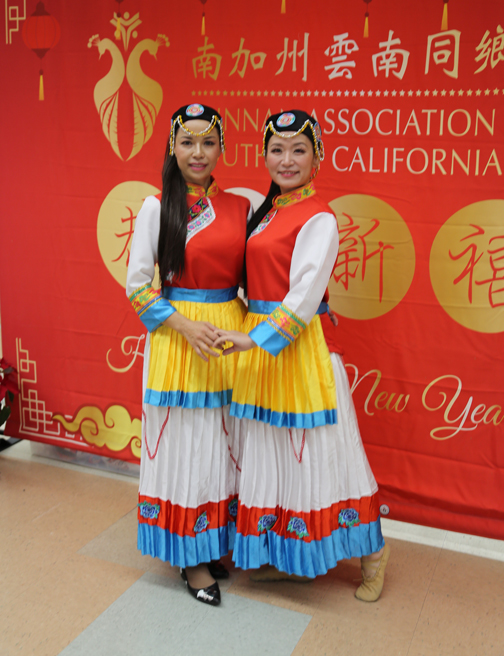
Youthful dancers in Hilltribe costume add color and song to Los Angeles’ Chinese New Year celebrations. Photo credit: Scott Busby
Before the Covid pandemic, travel from Mainland China to Los Angeles had increased by 650%. More than 1.2 million Chinese traveled to the city in 2018 and collectively they spent $1.6 billion – 23% of all international spending – on restaurants, hotels, entertainment and retail.
With an annual GDP of $3.36 billion, California’s economy, already the world’s fifth largest, increasingly is intertwined with East Asia. Prior to Covid, Los Angeles alone welcomed 103 nonstop flights every week and the number is expected to grow as Covid recedes and more of China’s second-tier cities establish direct air service.
Chinese tourism is an economic windfall for the entire U.S. According to the U.S. Commerce Department, 3.24 million Chinese nationals visited the U.S. in 2018 and spent more than $35 billion while here. The U.S. Travel Association estimates that Chinese visitors spend an average of $7,600 per person during their vacation.
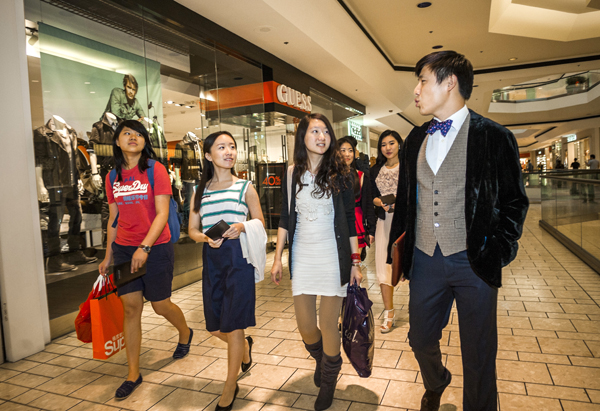
Merchandise from Apple, Louis Vuitton and Dolce & Gabbana costs much less in the US than in China. Mainland Chinese avoid import and luxury taxes by buying three or four pof the same item.
The first destination for the 1.2 million Mainland Chinese arriving in LA is the Beverly Center in West Hollywood whose 100 stores rival, if not surpass, those on Rodeo Drive. The Beverly Center supports LA’s “China Ready” program, which calls for businesses in the hospitality industry to employ Mandarin speakers, translate all promotional offers and informational materials into Chinese and accept China’s UnionPay credit cards.
Merchandise from Apple, Louis Vuitton and Dolce & Gabbana costs much less in the US. Mainland Chinese avoid import and luxury taxes by buying three or four of the same item.
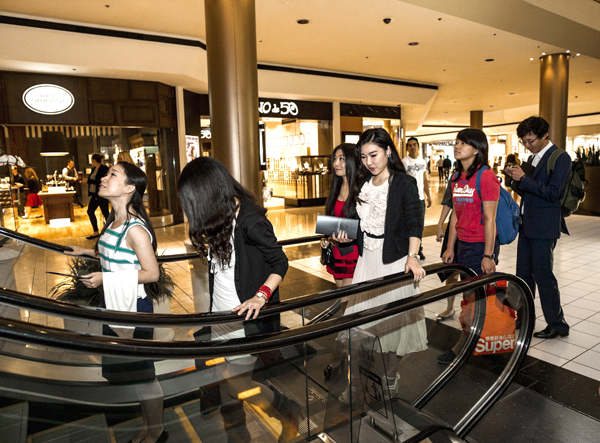
Lunar New Year shoppers at the Beverly Center in Los Angeles return to China and Taiwan with full suitcases.
During the Lunar New Year holiday, the Beverly Center receives up to 50 buses a day packed with recently arrived Chinese ready to spend money. Five Mandarin-speaking “brand ambassadors” use Weibo and WeChat to communicate with tour leaders before the buses even arrive. Since many Chinese only have an hour or so to shop, special concierges will escort shoppers to Apple, Louis Vuitton, Balenciaga and other stores they desire.
“We know from studying who walks through our doors that Chinese spend four times more than the average tourist,” explains Susan Vance, the Beverly Center’s director of marketing and sponsorship. “Often they buy multiple items of the same product and spend well into the six figures.”
Big spenders are immediately rewarded with red envelope gift cards, $50 for every $1,000 spent and $25 for a $500 purchase.
A wide array of businesses employ “China Ready” programs. Universal Studios offers Mandarin tours of its sound stages and movie sets. The Getty Museum experienced a noticeable increase in Chinese arrivals after it offered basic Mandarin instruction to its docents and began distributing Chinese language maps and audio guides.
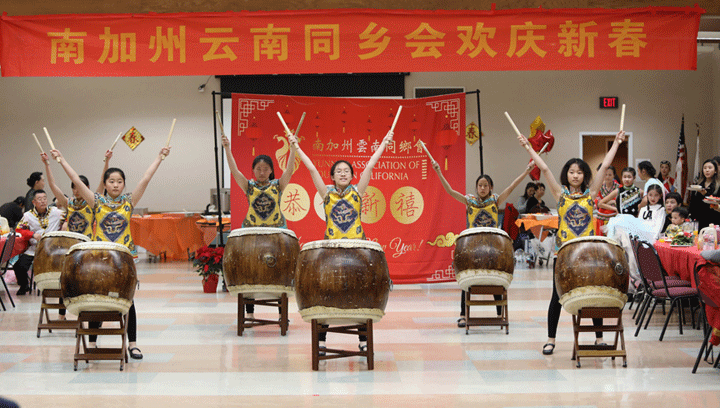
Yunnan Association of Southern California welcomes the lunar new year with a community potluck dinner and dancing. Photo by Scott Busby
Despite being a country where only 10% of the population has passports, China ranks as the world’s leading outbound travel market. But even without overseas visitors Chinese New Year already is a major event in Southern California, where tens of thousands of people spend the week eating Taiwan pineapple cakes and giving red envelopes called hongbao stuffed with cash to friends and relatives.![]()
Jian Huang is the Communications Director for EWNS. Her previous stories introduced Benedictine monks at the Subiaco Abbey in Arkansas and the San Fernando Valley’s Relics Museum. EWNS editor David DeVoss also contributed to this story.

